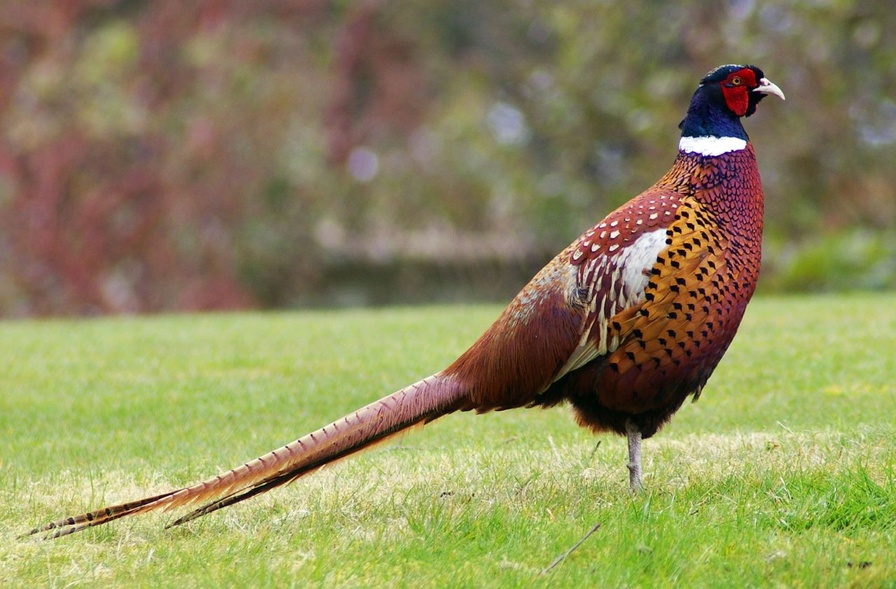It began with a breakfast discussion lamenting the fact we make so few products today in the United States. Eight of us, from Maine, Vermont and Pennsylvania, were hunting pheasants in North Dakota where the economy is booming thanks to the discovery of oil and a banner year for corn, canola and hay.
Back home, people in our states are really struggling. And we want to buy American-made products, we really do.
We listened as Bill Vail, Maine’s former commissioner of Inland Fisheries and Wildlife, told a story of the difficulty his wife, Sue, had in finding new dishes made in the USA.
I pulled off my Adidas sweatshirt to discover it was made in Indonesia. Then I got curious and checked the rest of my outfit.
Off came my University of Pittsburgh Semester-at-Sea T-shirt. It was made in El Salvador.
I untied and slipped off one of my New Balance sneakers — purchased with pride because I knew they were made right here in Maine. Oops! Mine were made in China!
Well, Haggar is a good old American company, isn’t it? Alas, although they had no label, I later discovered that my Haggar socks were made in China too! I had all-China on my feet.
In order not to add to my embarrassment, I stepped into the bathroom to strip off my L.L. Bean zip-off pants. Oh boy. This was starting to hurt. They were made in Bangladesh.
My underwear was made in India.
Fully clothed and a bit sheepish, I returned to the kitchen and grabbed food containers off the table, appalled to find that many were produced in other countries.
“Well,” I told my friends around the table. “At least we can be proud that the pheasants we ate for dinner last night came from North Dakota!”
Then Vail burst my bubble, informing us that pheasants are not native to this country. Brace yourself — they originally came from China!
All I could say, to recover from that blow, was thank goodness Linda and I have Chilton furniture in every room of our house. I am certain every single piece was made in the United States — much of it in Maine.
I’m sure of this because Chilton’s owner, Bill Martens, told me, and he was sitting at that same North Dakota table.
But now I was hooked, fanatically checking every label of every product and piece of clothing.
I was especially disappointed to discover that the Sportsman’s Alliance of Maine orange hat I’d been wearing all week was made in Myanmar.
But surely, the shirt I was planning to wear on the flight home, with the logo of the Maine Forest Products Council, would have been made in the United States.
Oh no. Made in Mexico.
And the fleece jacket I wear when traveling, with that good USA Columbia label on it, was made in Madagascar.
Back home, I was pleased to find that my mailing envelopes were made in the USA by Mead Westvaco, and my Staples brand copy paper is a USA product too.
But holy moly, the reporter’s notebooks that Linda and I use to take notes for our Travelin Maine(rs) column promoting travel in Maine were made in Mexico.
In its 2006 report, Charting Maine’s Future (commissioned by GrowSmart Maine), the Brookings Institution noted that Maine had lost more than 60,000 jobs in the manufacturing and natural resource sectors since 1970 when I graduated from the University of Maine — more than a third of all jobs in that category. I’m some old glad I didn’t go into manufacturing.
In spite of being blessed with great natural resources and hard-working productive citizens, we just can’t make it, or make anything, anymore, apparently.
I was thinking about this again one afternoon last week, as I sat in my tree stand hoping that a Maine-made whitetail deer might happen by, when it occurred to me that my hunting pants and coat were hand-made by Beagle Wear in Vermont. And they are, without question, the best hunting clothes I’ve ever owned.
Quality counts. Maybe there’s a path to prosperity for Maine, right there.
Jim Robbins, the organizer of our annual North Dakota trip, produces high quality pine in his family’s Searsmont lumber mill. We’re turning out good products in a growing number of Maine machine shops.
Two weeks ago at Harvest on the Harbor in Portland, I learned about some innovative ocean products that are now being made in Maine, from kelp to shrimp potpies.
So I’ve made a new commitment to look for and purchase Maine-made products. You should too. Now, check your labels!
George Smith is a writer and TV talk show host. He can be reached at 34 Blake Hill Road, Mount Vernon 04352, or georgesmithmaine@gmail.com. Read more of Smith’s writings at www.georgesmithmaine.com.
Send questions/comments to the editors.



Success. Please wait for the page to reload. If the page does not reload within 5 seconds, please refresh the page.
Enter your email and password to access comments.
Hi, to comment on stories you must . This profile is in addition to your subscription and website login.
Already have a commenting profile? .
Invalid username/password.
Please check your email to confirm and complete your registration.
Only subscribers are eligible to post comments. Please subscribe or login first for digital access. Here’s why.
Use the form below to reset your password. When you've submitted your account email, we will send an email with a reset code.